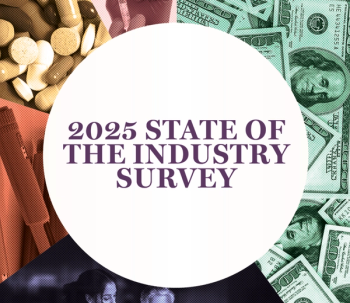
Four pain management programs curbing the opioid epidemic
From State-led programs to innovative pharmacist-hospital partnerships, these programs are fighting to quell the epidemic.
From State-led programs to innovative pharmacist-hospital partnerships, these programs are fighting to quell the epidemic.
1. Department of Veterans Affairs (VA) Opioid Safety Initiative
The VA system credentials pharmacists to prescribe medications, including opioids and substance abuse treatment medications
For the last two decades,
Launched by the VA in 2013, the
A recent
As part of the OSI initiative, the VA EHR
2. Governor’s Cabinet Opiate Action Team in Ohio
Ohio has the fifth highest rate of drug overdose deaths (24.6 deaths per 100,000) in the U.S. In 2011, Ohio Gov. John R. Kasich announced the establishment of the Governor’s Cabinet
· Promote the responsible use of opioids;
· Reduce the supply of opioids; and
· Support overdose prevention and expand access to naloxone.
Innovations to assist these goals include the development of Ohio guidelines on the responsible use of opioids, mandatory use of Ohio's prescription drug monitoring program, closing pill mills, promotion of drug take-back programs, and increased access to naloxone and public health campaigns.
According to a
3. Geisinger, Danville, Pennsylvania
Since 2014, Geisinger, an integrated health services organization, has reduced opioid prescriptions in emergency departments, physician offices, and community practice clinics by almost half, from an average of 60,000 prescriptions per month to 31,000.
Geisinger’s Medication Therapy Disease Management (MTDM) is one program that helped this dramatic decrease in opioid prescriptions. The MTDM program allows pharmacists to work with physicians in clinics to learn more about the medications a patient is taking, set pain control expectations, and manage medications that can easily be abused.
Pharmacists also team up with addiction-trained social workers to better deal with the psychosocial aspect of pain and monitor patients for signs of addiction. Clinical pain pharmacists now work at 15 primary care and specialty care sites and currently address chronic pain treatment for more than 1,100 patients every month.
Besides a reduction in opioid prescriptions, statistics from MTDM’s pain pharmacy program show 74% of patients reported improvements in overall health, 86% reported an increase in physical functioning, and overall there was a 25% reduction in cost and a 19% reduction in claims.
Evans
In addition, Geisinger’s Medication Assisted Treatment (MAT) centers, also plays a role in decreased opioid use. These clinics offer new, holistic methods to prevent and treat heroin and prescription opioid abuse with a combination of medical, social, and environmental interventions. Geisinger opened the first MAT clinic this past spring in Bloomsburg, Pennsylvania, a second clinic just opened in South Wilkes-Barre, Pennsylvania, and plans for a third clinic in the central region are under way.
“Geisinger has taken a multi-prong approach to the opioid epidemic which ranges from the faucet, which refers to the prescribing of opioids, to the drain, which is the removal of unneeded opioids from homes,” says Mike Evans, Geisinger’s associate vice president for clinical strategy and innovation and co-director for the Center for Pharmacy Innovation and Outcomes.
4. Riverside Health System, Newport News, Virginia
- Enhancing diversion detection and prevention within organization, including expansion of pre-employment drug screening panel.
- Implementation of multimodal pain management treatment algorithms in inpatient order sets, with a specific focus on surgical patients.
- Education of medical staff on CDC opioid guidelines.
- Participation in regional opioid task force, with focus on community education, collaboration with law enforcement, standardization of opioid prescribing in the emergency department, etc.
- Development of opioid management tools within electronic health record to support safe and effective prescribing and meet newly implemented regulatory requirements.
- Development of patient education materials around multimodal pain management, and the risks of addiction with opioids.
- Development of treatment algorithms for managing patients with opioid use disorder admitted for treatment of non-opioid related medical conditions.
“With the increasing rate of opioid addiction, newly implemented-and changing-state prescribing requirements and limits, lack of access to treatment programs in many areas, and the increased cost of healthcare for those with opioid use disorder, managed care executives need to be aware of the challenges and make sound decisions that balance patient care and access to opioids,” says Cindy Williams, BS Pharm, FASHP, vice president/chief pharmacy officer, Riverside Health System.
Riverside has been focusing on several components of the program over the last three to five years, including multimodal pain management and diversion detection/prevention. With the rising rate of opioid misuse/addiction, the release of the CDC guidelines, and regulatory pressures, Riverside increased the focus in 2016. Since that time, the program continues to evolve based on identified opportunities and emerging best practice.
Early results include:
- More informed medical staff related to appropriate opioid prescribing
- Consistent use of multimodal pain management in surgical procedures.
- Development of patient focused pain management education and tools.
- Enhancement of the EHR to support provider prescribing and documentation.
Newsletter
Get the latest industry news, event updates, and more from Managed healthcare Executive.






















































